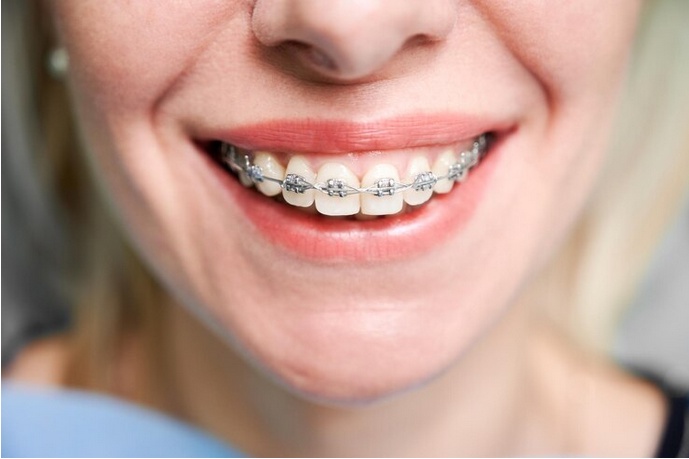A confident, radiant smile can be a game-changer, impacting self-esteem, personal interactions, and overall quality of life. In the world of orthodontics, various solutions have been developed to help individuals achieve that perfect smile. One lesser-known but highly effective option is lingual braces. This guide delves into the world of lingual braces, revealing the key aspects of this orthodontic treatment, from how it works to its benefits and considerations.
What Are Lingual Braces?
Lingual braces, often referred to as "invisible" or "hidden" braces, are a type of orthodontic treatment designed to correct misaligned teeth discreetly. Unlike traditional braces, which are attached to the front of the teeth, lingual braces are placed on the inside surface of the teeth. This unique positioning makes them virtually invisible to others.
How Do Lingual Braces Work?
Lingual braces work on the same fundamental principles as traditional braces, applying controlled force to the teeth to shift them into the desired position. The key steps involved in lingual braces treatment are as follows:
-
Initial Consultation: The orthodontic journey with lingual braces begins with an initial consultation with a qualified orthodontist. During this visit, your orthodontist will examine your teeth, discuss your goals, and determine if lingual braces are the right solution for your orthodontic needs.
-
Customization: Once you decide to proceed with lingual braces, your orthodontist will take precise impressions of your teeth. These impressions are then used to create custom-made brackets and wires that fit the unique contours of your teeth.
-
Placement: After the customization process, the lingual braces are carefully placed on the inside surfaces of your teeth. Each bracket is attached to the individual tooth, and wires connect them. The orthodontist will make adjustments to ensure that the braces provide the correct amount of pressure to guide your teeth effectively.
-
Regular Adjustments: As with traditional braces, you will need to visit your orthodontist regularly for adjustments. These appointments allow the orthodontist to fine-tune the braces to continue moving your teeth into their desired positions.
-
Removal and Retention: Once your orthodontic goals are achieved, the lingual braces are removed. In most cases, a retainer is prescribed to help maintain the newly aligned teeth and prevent relapse.
Benefits of Lingual Braces
Lingual braces offer several advantages that make them a popular choice for those seeking orthodontic treatment:
-
Discreet Appearance: The most significant advantage of lingual braces is their nearly invisible nature. They are hidden from view because they are placed on the inner side of the teeth, allowing you to maintain a natural smile during your treatment.
-
Effective for Complex Cases: Lingual braces are highly effective for complex orthodontic issues, including severe crowding, spacing problems, and various bite problems.
-
Comfort: Lingual braces are custom-made to fit the individual's teeth, reducing the risk of irritation to the cheeks and lips. Over time, most patients find them comfortable to wear.
-
No Dietary Restrictions: Unlike clear aligners, which are removable, lingual braces don't come with dietary restrictions. You can eat and drink as you normally would without concern about damage to the braces.
-
Shorter Treatment Duration: In some cases, lingual braces can provide faster results compared to other orthodontic options.
-
Improved Oral Health: Lingual braces can improve oral hygiene during treatment since they don't interfere with toothbrushing and flossing, as traditional braces can.
Considerations with Lingual Braces
While lingual braces offer several advantages, there are also considerations to keep in mind:
-
Cost: Lingual braces tend to be more expensive than traditional braces or clear aligners due to their customization and the specialized skill required for their placement.
-
Adjustment Period: There is an adjustment period with lingual braces, as they may initially affect speech and cause some discomfort. However, most patients adapt within a few weeks.
-
Regular Maintenance: Lingual braces require regular maintenance, including more frequent orthodontist visits for adjustments, compared to some other orthodontic options.
-
Complex Cleaning: Cleaning and maintaining oral hygiene with lingual braces can be more challenging than with clear aligners or traditional braces. Specialized tools may be required to reach certain areas.
Conclusion
Lingual braces offer a discrete and effective solution to orthodontic issues, allowing individuals to achieve a beautiful, well-aligned smile without the visible appearance of traditional braces. The treatment process involves customization, placement, adjustments, and retention, all of which work together to gently shift the teeth into their desired positions.
The key benefits of lingual braces include their discreet appearance, effectiveness for complex cases, comfort, lack of dietary restrictions, potentially shorter treatment duration, and improved oral health. However, it's essential to consider factors such as the cost, adjustment period, regular maintenance, and the need for complex cleaning.


No comments yet